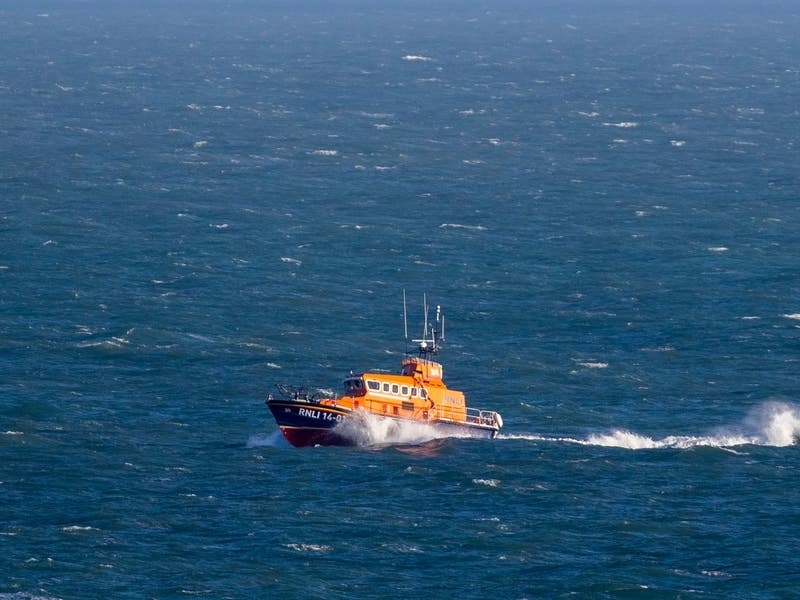By Ted Vibert
LAST Tuesday, one of the most important public inquiries ever held in Jersey into a planning application began before an independent UK planning inspector – to decide the future of the Waterfront. This area stretches from the AquaSplash building to the West Park slipway and includes Jardins de la Mer and the two parking areas, which would be replaced by an underground car park.
The case had been sent to a public inquiry because the Planning Committee had refused the application – a normal procedure when any large-scale development is refused by the committee.
The proposal before the inspector was being put by the Jersey Development Company, which is owned by the people of Jersey. The land itself is also owned by the people of Jersey, so Islanders have an important say in how it should be used, bearing in mind this land was reclaimed from the sea using taxpayers’ money.
The JDC’s plan involves building 984 apartments, shops, restaurants, a 25-metre outside pool (lido) and a gym. With open spaces and tree-lined streets figuring strongly in the plans, the landscaping has all been designed by highly qualified UK specialists Gillespie Landscaping, who have a global reputation for their work on urban renewal in many parts of the world.
I decided to sit in and take part in the inquiry on all of the four days, from 9.30am often until past 5pm, because for years, like many Islanders, I have been deeply disappointed at what our Waterfront has turned out to be.
I was happy to tell the inspector that I recall, back in the early 1970s, when the land was being reclaimed, the Island was told by the president of the Policy and Resources Committee how exciting it was all going to be. ‘Jersey will have a world-class waterfront,’ he proudly proclaimed.
I left Jersey for Australia soon after and returned 28 years later, full of hope and expectation of seeing our ‘world-class’ effort. Having experienced the delights of the new Sydney waterfront, which resurrected derelict waterfront railway sidings into a magical place for leisure and entertainment opposite the fabulous Sydney Opera House, and having had the same experience on a visit to Capetown, with the conversion of old abandoned warehouses, I was keen to see what we had achieved.
Imagine my shock when I saw our effort from the taxi coming into St Helier for the first time in 28 years. I saw a drab, featureless blank wall of what looked like the back of a row of garden sheds or factories which housed Cineworld, a Kentucky Fried Chicken, a Pizza Hut and a gym.
Like many Islanders, I fear that the same kind of effort will be the result of the new proposals, even though it would be unfair to suggest that the JDC could possibly be that bad. But I must admit to a feeling of deep disappointment when I saw the detailed plans and the way nearly 1,000 units were going to be crammed on the site.
I was filled with that sinking feeling one gets when looking at the just-completed Horizon building. I realised that this could be repeated over and over again, right next to the Radisson Hotel, a building so lacking in style and of so little architectural merit that it once won an award as the worst ‘carbuncle’ built that year.
I am happy to say that I was not the only citizen to voice my concerns to the inspector about what I considered to be a wasted opportunity for creating something that would make those of us who live, work and visit St Helier proud of our town.
Fortunately, present throughout the four-day hearing was John Young, the now retired former St Brelade Deputy and a former chief executive of the Planning and Environment Department who, when elected to the States, became an effective Environment Minister.
It was good to see him back in action. And he demonstrated that he had lost none of his passion for Jersey, his desire to continue to make the Island a more pleasant place for our children and grandchildren to enjoy and the skills to present his views robustly in a clear and logical way.
He rose many times to explain to the inspector the history of previous plans to develop the site. And he outlined the difficult problems that will be encountered when extracting and dumping the vast quantities of toxic material and raised concerns about the risk to the health of those who live in the area when that material is extracted and moved somewhere else (but we know not where). The inspector did not seem too keen on the answers given as to how that problem would be dealt with.
John Young expressed anger and disappointment that the JDC had failed completely to provide any workable answer to improving the connectivity of the Waterfront to the town, which has plagued the development from the very start. It was such a missed opportunity, he lamented.
He completely agreed with the Jersey Architectural Commission, which has diligently examined all the proposals – acting as a ‘critical friend’ – and assessed the whole package. The commission has recommended some form of ‘bridging’ to connect the Waterfront to the town but this had not been developed, which Mr Young felt was a serious error. He pointed out that in one of their reports they stated: ‘La Route de la Liberation creates an unpleasant severance of this district from the town. Mitigations are proposed and a strategy for its future should be a key condition.’
He asked the inspector to give serious consideration to the commission’s conclusion, which stated: ‘The commission wants to see an exciting new place grow up over the next 12 years. The question at the heart of all our design reviews [they held at least six over a two-year period] is: “Has the design been inspired by and captured the character and atmosphere of St Helier? The parameter plans presented sadly do not deliver this.”’
In short, the commission – a group of local and UK architects – ‘finds it difficult to support the plans as currently submitted’. They also state: ‘More emphasis should be placed on how to make this the place of choice to live in St Helier. Creating a new part to any town is difficult, more so in St Helier and Jersey. The plans require further work to resolve climate resilience, to achieve a sustainable community and to create places that nurture vitality and have a distinctive character that complements St Helier.’
Mr Young pointed out to the inspector that ‘what we have here is not a plan for a modern, vibrant, stylish, urban community. It is nothing more than a business plan that attempts to provide housing without the States spending any money’.
Other citizens who provided knowledgeable and effective contributions during the hearing were retired local architect Derek Mason and retired engineer Chris McCarthy, who both supported the views of the Jersey Architecture Commission, opposing the project.
The inspector also heard from two members of the Jersey Youth Parliament who logically explained that losing the pool, cinema and other amenities before replacement attractions were built would leave young people without important places to gather for entertainment and physical activity for years, which was contrary to the States’ commitment to put children first. They asked the inspector to ensure that their replacement amenities were built first, before anything else, so that they would not be left without them.
The final summing-up for the Planning Department’s strong opposition to the proposal was carried out by the senior planner of special projects, Wendy Johnston BAC (Hons), BTPL, MSc, MRTPI. It was clear from her remarks that consent had not been refused just because there is ‘no room on the mound at La Collette for the toxic material’.
In a withering dissection of the case put forward by the JDC, she took a scalpel and shredded it in one of the most effective demolitions I have heard, pointing out the large number of ways the proposal did not satisfy the requirements of the Bridging Island Plan.
I found it extraordinary that only one States Member – Deputy Steve Ahier – attended this hearing. St Helier has 13 Deputies, four of whom represent the very area where the Waterfront is located (St Helier South) – Deputies Mézec, Porée, Cole and Warr.
This was, without doubt, the most important matter affecting St Helier and their constituents for years and yet they couldn’t be bothered to represent them and relay their concerns to the inspector. The only possible excuse for their absence is if they were out of the Island, as was the Constable of St Helier. Otherwise, it was a very poor show.
It is a demonstration of how little they understand what is happening in Jersey when it was left to retired people to man the barricades. Do these politicians not care about St Helier?






